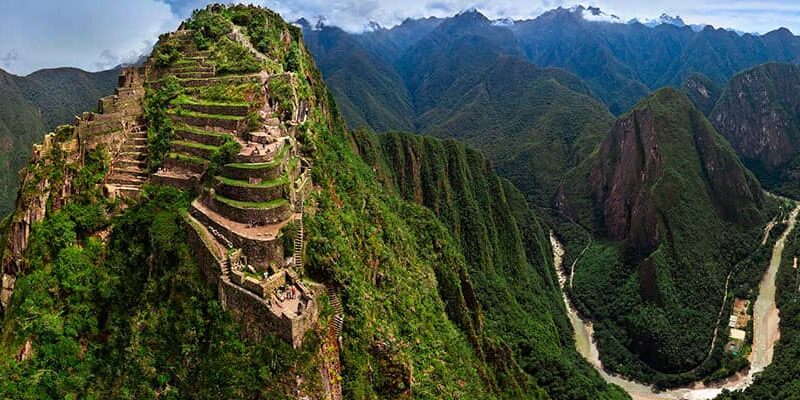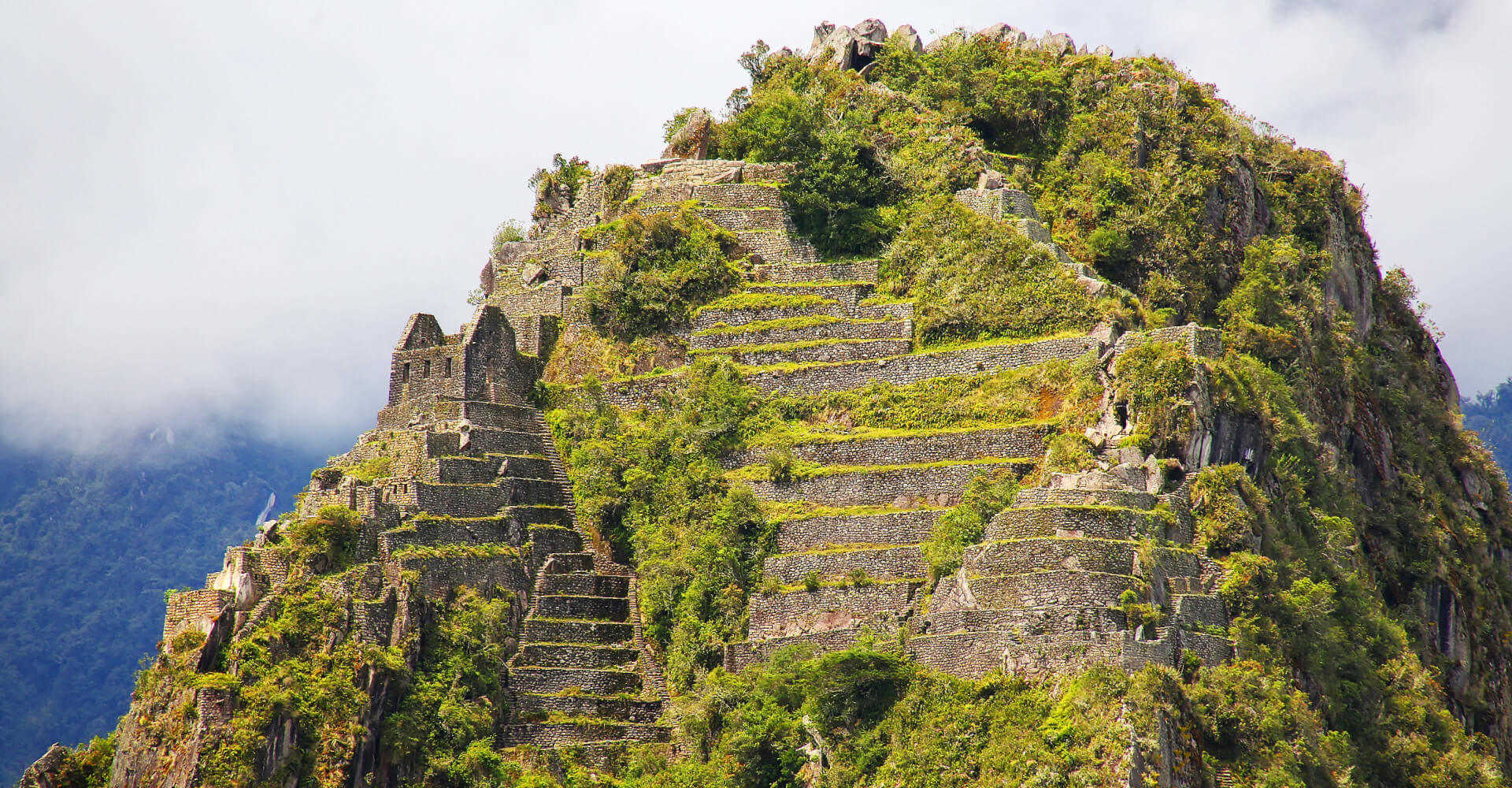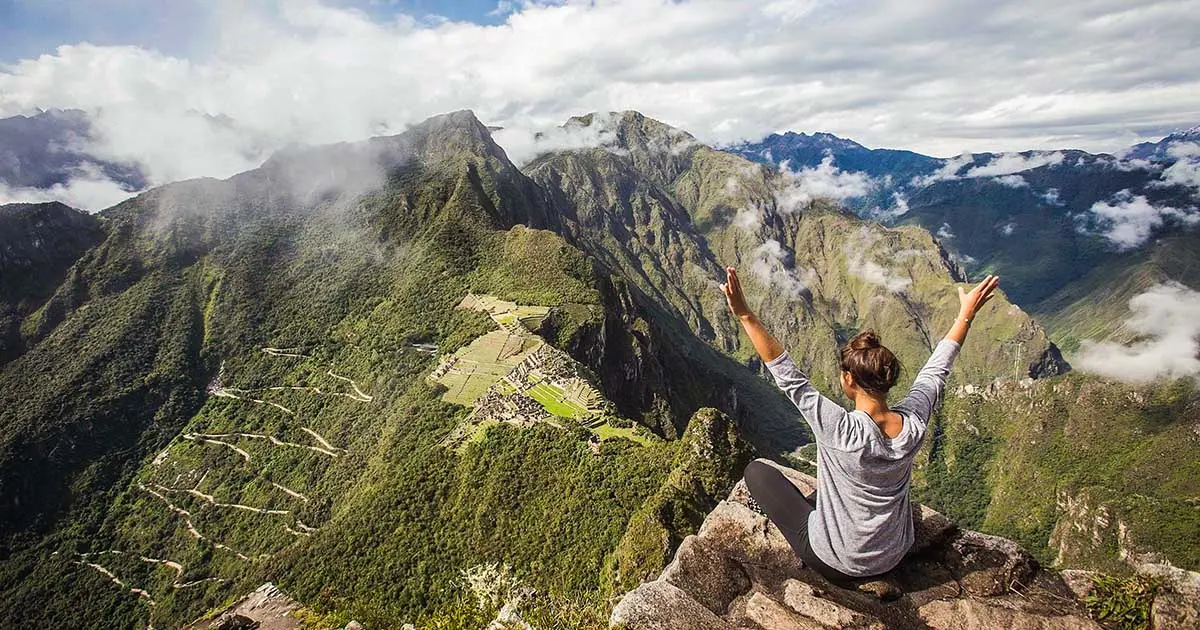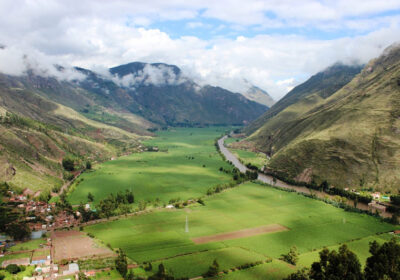
Huayna Picchu is the mountain that guards Machu Picchu
Discover the iconic mountain that frames Machu Picchu: Huayna Picchu. Learn about its history and archaeology, and take in breathtaking panoramic views of the Inca city.
Table Of Content
If you’re planning a trip to Peru, then you probably already know that visiting Machu Picchu is one of the world’s most incredible experiences. But there’s one thing that makes it even more special: climbing Huayna Picchu.
This guide includes all the information you need, from ticket purchasing and visiting hours to the latest prices for 2025, difficulty level, helpful tips, and a personal description of the hike.
What is Huayna Picchu?
The classic postcard image of Machu Picchu always features an imposing, pointed mountain in the background. It is Huayna Picchu, also spelled Wayna Picchu, which translates from the Quechua language as “young mountain.” Facing Huayna Picchu is Machu Picchu, the “old mountain,” and together, they form the most iconic landscape in Peru.
Huayna Picchu rises to an elevation of 2,693 meters, some 300 meters higher than the Inca citadel. From its summit, visitors can enjoy the most spectacular view of the entire archaeological complex. The sacred city stretches out below them, and the Urubamba River winds around it.
How to Enter Huayna Picchu:
Access is very limited. Only 350 people are permitted to climb Huayna Picchu each day, and a combined ticket for Machu Picchu and Huayna Picchu (Route 3A) is required. Separate tickets for Huayna Picchu are not available.
The permitted climbing times are divided into two time slots:
Group 1: 8:00 a.m. to 9:00 a.m.
Group 2: 10:00 a.m. to 11:00 a.m.
Visitors have six hours in total to explore both Machu Picchu and Huayna Picchu. To accommodate high demand, we recommend that you book several months in advance.
The difficulty of the hike
The round-trip hike takes between two and three hours. Although the distance is not long, the trail’s difficulty level is moderate to high.
The trail is narrow and steep with challenging sections like the “Stairs of Death,” a series of stone steps that climb almost vertically, and the “Inca Tunnel,” a narrow passageway requiring hikers to stoop.
Hikers agree that the climb is worthwhile because from the summit, they can enjoy unique views of Machu Picchu and the surrounding mountains—one of the most breathtaking panoramas on the planet.
There are archaeological remains on the mountain
In addition to its natural beauty, Huayna Picchu features remnants of the Inca civilization. Along its slopes, visitors can see agricultural terraces and small stone pathways.
The most striking feature is the enigmatic Temple of the Moon, which is located within a natural cave at the base of the mountain. While researchers do not know its exact function, they believe that it served as a ceremonial or ritual site linked to the Andean worldview of worshiping sacred mountains.
Travel tips
The minimum age to climb is 12 years old.
The rules prohibit the use of drones, tripods, large umbrellas, and food.
The best time to climb is during the dry season, from April to October, when the trails are safer and the sky is usually clear.
We recommend that you bring hiking shoes, light clothing, a rain jacket, water, snacks, a hat, sunscreen, insect repellent, and identification documents.
It’s a unique experience in the world
Visiting Machu Picchu is an unforgettable experience, but climbing Huayna Picchu takes it to another level. It offers the most iconic view of the citadel and provides the thrill of walking along authentic Inca trails and the adrenaline rush of climbing its steep steps. It also offers the privilege of contemplating one of the most breathtaking landscapes on the planet.
Huayna Picchu is undoubtedly the crowning jewel of a trip to Machu Picchu, combining nature, archaeology, and history into one unforgettable adventure.









No Comment! Be the first one.